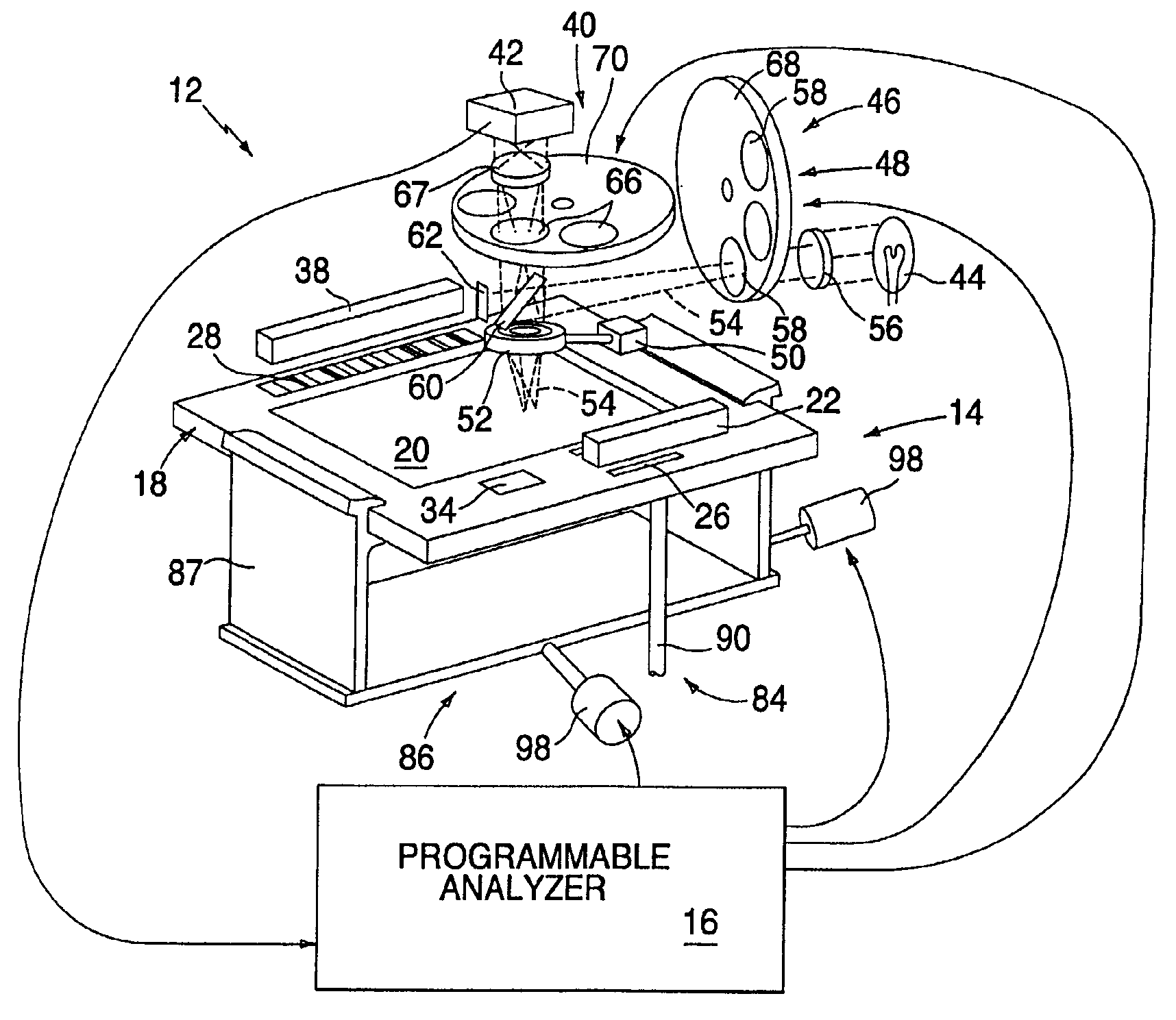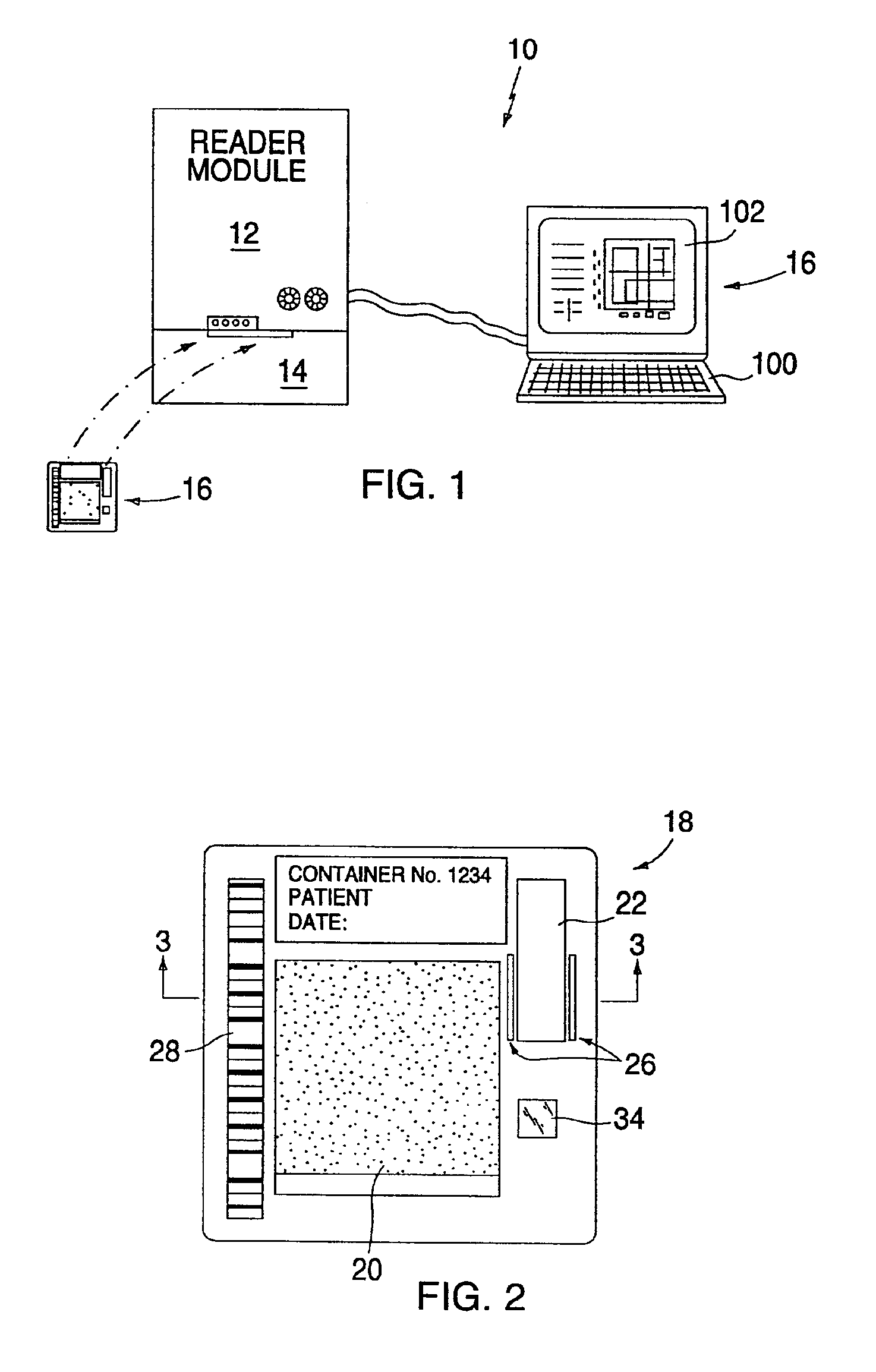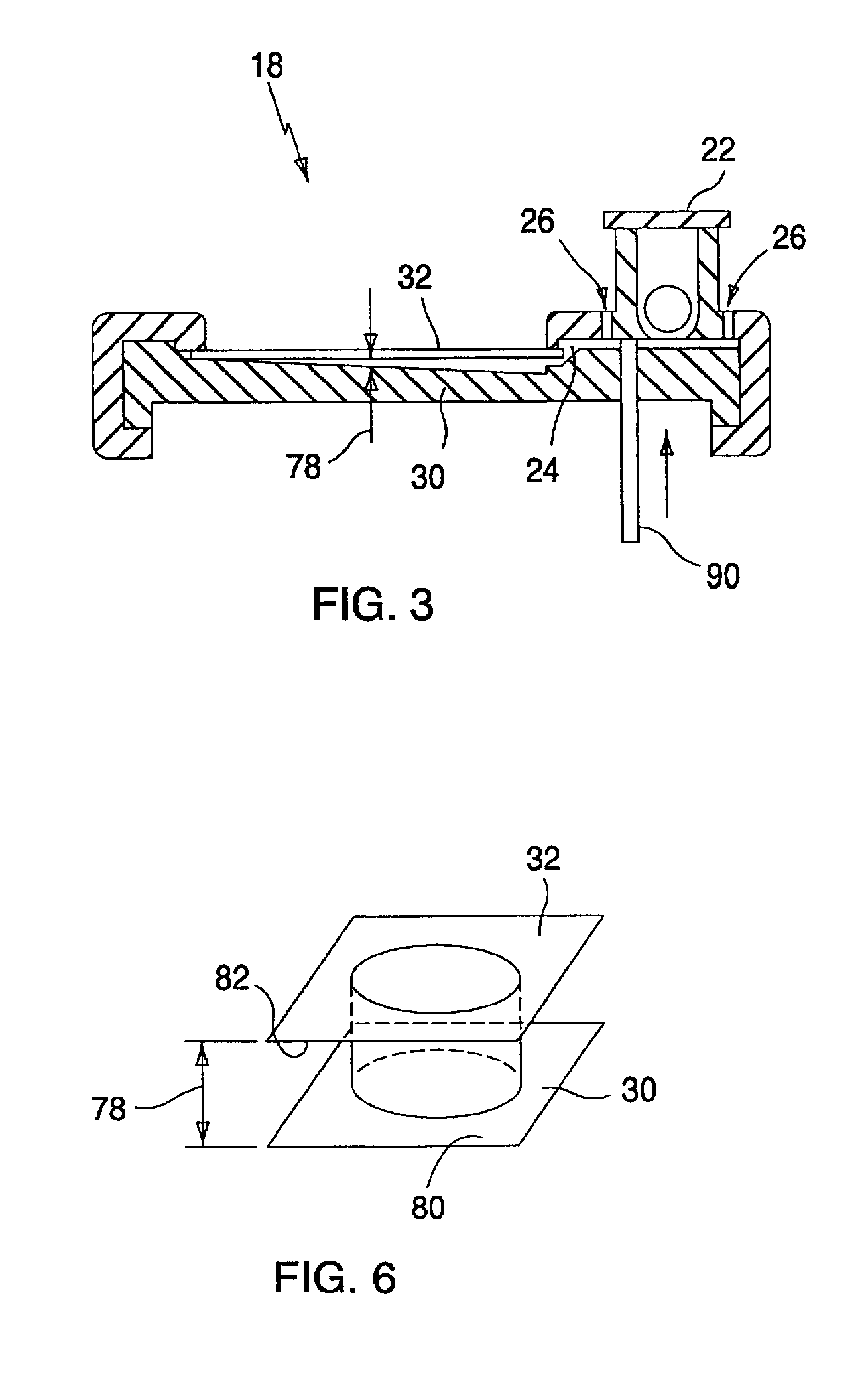Apparatus for analyzing biologic fluids
a technology for biologic fluids and apparatuses, which is applied in the field of apparatus for analyzing biologic fluid samples, can solve the problems of not being readily available to the office or laboratory, and no single presently available analysis device can perform all of these analyses, so as to reduce equipment costs, increase the number of tests, and reduce the effect of manpower and training
- Summary
- Abstract
- Description
- Claims
- Application Information
AI Technical Summary
Benefits of technology
Problems solved by technology
Method used
Image
Examples
example 1
Hematological Analyses
Referring to FIG. 4, to enable an analysis of white blood cells (WBC's) within an anticoagulated whole blood sample, a container 18 having approximately 0.8 micrograms (μg) of a sensible colorant and 50 μl of anticoagulated whole blood disposed within its reservoir 22 is inserted into the Sample Transport Module 14. Prior to insertion, the operator may gently shake the container 18 to ensure uniform mixing of the colorant and the fluid sample. The label reader 38 disposed within the Reader Module 14 reads the container label 28 and transfers the information contained within the label 28 to the Programmable Analyzer 16. In this example, the information identifies one or more specific analysis algorithms to be used and a plurality of container features operable to enable the analysis of the biologic fluid sample. Those features include identifying the anticoagulating agent as EDTA, the sensible colorant as a fluorescent highlighting supravital stain such as acrid...
example ii
Chemical Analyses
Referring to FIGS. 1 and 4, a complete blood count requires that the RBC's be evaluated for hemoglobin content using a chemical analysis. The operator deposits the whole blood sample into the container reservoir 22 and gently shakes the container 18 to ensure uniform mixing of the sample and a colorant previously deposited in the reservoir 22, and inserts the container 18 into the Reader Module 12. The label reader 38 reads the container label 28 and transfers the information contained within the label 28 to the Programmable Analyzer 16. Similar to the process described above, the label-provided information identifies a plurality of analysis algorithms and a plurality of container features operable to enable the analysis of the biologic fluid sample. In this example, the container features include lysing and stabilizing reagents and their spatial location within a chamber 20, the colorant deposited in the reservoir, and physical characteristics of the chamber 20 at ...
example iii
Referring to FIGS. 1 and 4, a complete urinalysis requires a chemical analysis and a particulate analysis of the urine sample. The operator places a urine sample within the reservoir 22 of the container 18 and the container 18 is installed within the Reader Module 12. The label reader 38 reads the container label 28 and passes the information contained therein to the Programmable Analyzer 16. The information from the label 28 identifies a plurality of analysis algorithms and container features operable to enable the analysis of the biologic fluid sample, and like the hemoglobin example above, the analyses may be performed in a single chamber 20 or in a plurality of chambers. In this example, the label 28 provides information that the container features include colorant disposed in the container reservoir 22, one or more chemical reagents disposed at known spatial locations within a chamber 20 to colorometrically relate information concerning the specific gravity, pH, gluco...
PUM
| Property | Measurement | Unit |
|---|---|---|
| thick | aaaaa | aaaaa |
| wavelength range | aaaaa | aaaaa |
| thickness | aaaaa | aaaaa |
Abstract
Description
Claims
Application Information
 Login to View More
Login to View More - R&D
- Intellectual Property
- Life Sciences
- Materials
- Tech Scout
- Unparalleled Data Quality
- Higher Quality Content
- 60% Fewer Hallucinations
Browse by: Latest US Patents, China's latest patents, Technical Efficacy Thesaurus, Application Domain, Technology Topic, Popular Technical Reports.
© 2025 PatSnap. All rights reserved.Legal|Privacy policy|Modern Slavery Act Transparency Statement|Sitemap|About US| Contact US: help@patsnap.com



